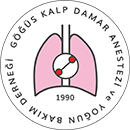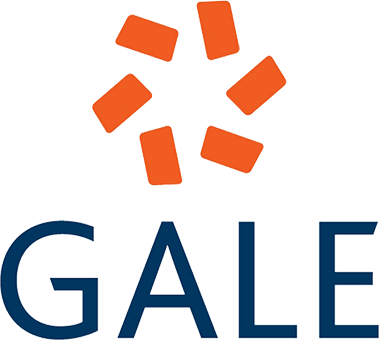

Kalp Cerrahisi Sonrası Gelişen Akut Solunum Yetersizliğinde Noninvaziv Mekanik Ventilasyon
Esra Eker1, Ceren Köksal1, Türkan Kudsioğlu1, Nihan Yapıcı1, Zuhal Aykaç1, Ali Kemal Gür2, Özgür Gürsu3, Selvi Asker41Siyami Ersek Göğüs Ve Kalp Damar Cerrahisi Eğitim Ve Araştırma Hastanesi Anesteziyoloji Ve Reanimasyon Kliniği, İstanbul, Türkiye2Siyami Ersek Göğüs Ve Kalp Damar Cerrahisi Eğitim Ve Araştırma Hastanesi Kalp Damar Cerrahisi Kliniği, İstanbul, Türkiye
3Siyami Ersek Thoracic And Cardiovascular Surgery Training And Research Hospital Department Of Cardiovascular Surgery, İstanbul, Turkey
4Van Bölge Eğitim Ve Araştırma Hastanesi Göğüs Hastalıkları Kliniği, Van, Türkiye
AMAÇ: Amaç: Kalp cerrahisi geçiren Kronik Obstruktif Akciğer Hastalarında (KOAH ); erken postoperatif dönemde gelişen akut solunum yetersizliğinde noninvaziv mekanik ventilasyon (NIMV) kullanılmasının hastanın solunumsal ve hemodinamik parametrelerine olan etkilerini araştırmaktır.
YÖNTEMLER: Gereç ve Yöntem: Açık kalp cerrahisi uygulanmış, ekstübasyon sonrası akut solunum yetersizliği gelişen 40 KOAH hastası çalışmaya alındı. Spontan solunumu olmayan, miyokard infarktüsü geçiren, aritmisi olan, hipotansiyon veya şok gelişen, koopere olamayan, yoğun sekresyonu ve yüzünde anatomik bozukluğu olan hastalar çalışmaya dahil edilmedi. Postoperatif dönem 30. Dakikada Solunum hızı>24/dk ve/veya arter kan gaz analizinde; PaCO2>50mmHg, pH<7.30,PaO2 değeri 60 mmHgnın altında olan veya PaO2/FiO2<250 olan hastalara 5cmH2O PEEP, 15cmH2O Pressure Support ventilatör ayarları ile oronazal maske kullanılarak NIMV uygulandı. PaCO2<45mmHg ve PaO2/FiO2>300 olması hedeflendi.
BULGULAR: Bulgular: Hastaların NIMV öncesine göre, NIMV uygulanmasından 1 ve 2 saat sonra kaydedilen ortalama arter basıncı(OAB), kalp hızı, solunum sayısı, PaCO2, PaO2, pH sonuçları istatistiksel olarak anlamlı değişti (p<0.05). PaO2 NIMV öncesine göre daha yüksek, PaCO2, kalp hızı, solunum sayısı, pH ve OAB daha düşük bulundu.
SONUÇ: Sonuç: Açık kalp cerrahisi uygulanan ve ekstübasyon sonrası solunum yetersizliği gelişen KOAH hastalarında, NIMVun uygun şekilde kullanılması, hastanın solunumsal ve kardiak parametrelerini düzeltmektedir. Bu durum entübasyon tekrarlarını ve invaziv mekanik ventilasyon komplikasyonlarını önleyerek hastaların yoğun bakım ve hastanede kalış süreleri kısaltabilmektedir.
Noninvasive Mechanical Ventilation For Acute Respiratory Failure Occured After Cardiac Surgery
Esra Eker1, Ceren Köksal1, Türkan Kudsioğlu1, Nihan Yapıcı1, Zuhal Aykaç1, Ali Kemal Gür2, Özgür Gürsu3, Selvi Asker41Siyami Ersek Thoracic And Cardiovascular Surgery Training And Research Hospital Department Of Anesthesiology And Reanimation, İstanbul, Turkey2Siyami Ersek Thoracic And Cardiovascular Surgery Training And Research Hospital Department Of Cardiovascular Surgery, İstanbul, Turkey
3Van Regional Training And Research Hospital Department Of Thoracic And Cardiovascular Surgery, Van, Turkey
4Van Regional Training And Research Hospital Pulmonary And Respiratory Diseases Clinic, Van, Turke
OBJECTIVE: : To research the effect of using non-invasive mechanical ventilation (NIMV) on the respiratory and hemodynamic parameters in acute respiratory failure those develop during early postoperative period in Chronic Obstructive Pulmonary Disease (COPD) patients who underwent heart surgery.
METHODS: Forty (40) COPD patients, who underwent open heart surgery and developed acute respiratory failure following extubation, were included to the study. Patients without spontaneous respiration, who had myocardial infarction, arrhythmia, hypotension or developed shock, uncooperative, have intense secretion and facial anatomic abnormalities were excluded from the study. NIMV was applied by using oronasal mask; Postoperative period 30th minute Respiratory rate>24/min and/or in artery blood analysis; PaCO2>50mmHg, pH<7.30, PaO2 value is below 60 mmHg or PaO2/FiO2<250 patients were applied 5cmH2O PEEP, 15cmH2O Pressure Support ventilator settings. PaCO2<45mmHg and PaO2/FiO2>300 were targeted.
RESULTS: : Mean arterial pressure (MAP), heart rate, respiratory rate, PaCO2, PaO2, pH results of the patients recorded 1 and 2 hours after the NIMV application were changed significantly than before NIMV statistically (p<0.05). PaO2 was higher than pre NIMV and PaCO2, heart rate, pH and MAP were found lower.
CONCLUSION: : Appropriate use of NIMV improves the patient's respiratory and cardiac parameters In COPD patients those underwent open heart surgery and respiratory failure developed after extubation. This can shorten the duration of the patients intensive care unit and hospital stays by preventing repetitive intubations and complications of mechanical ventilation complications.
Makale Dili: Türkçe
(1664 kere indirildi)

















